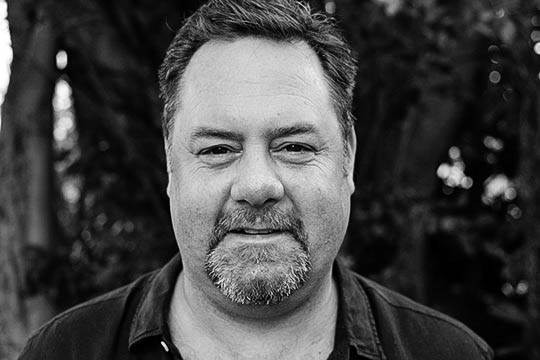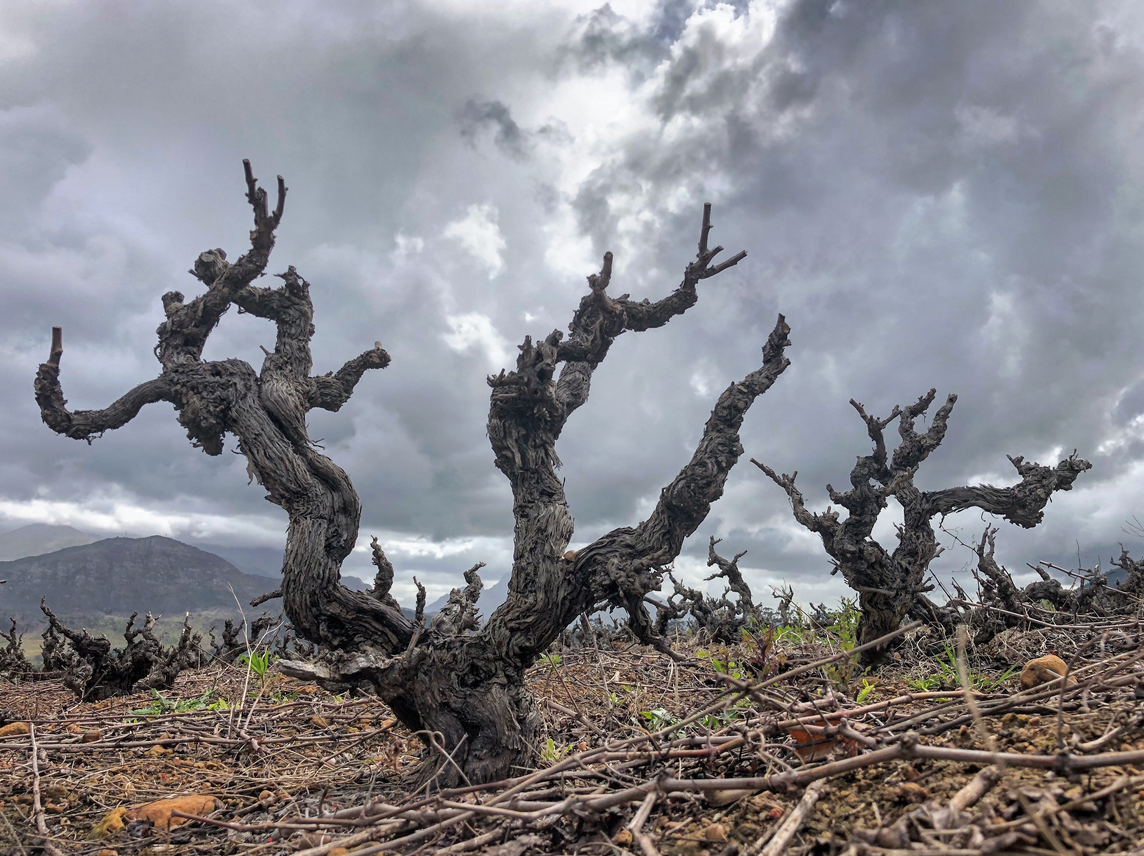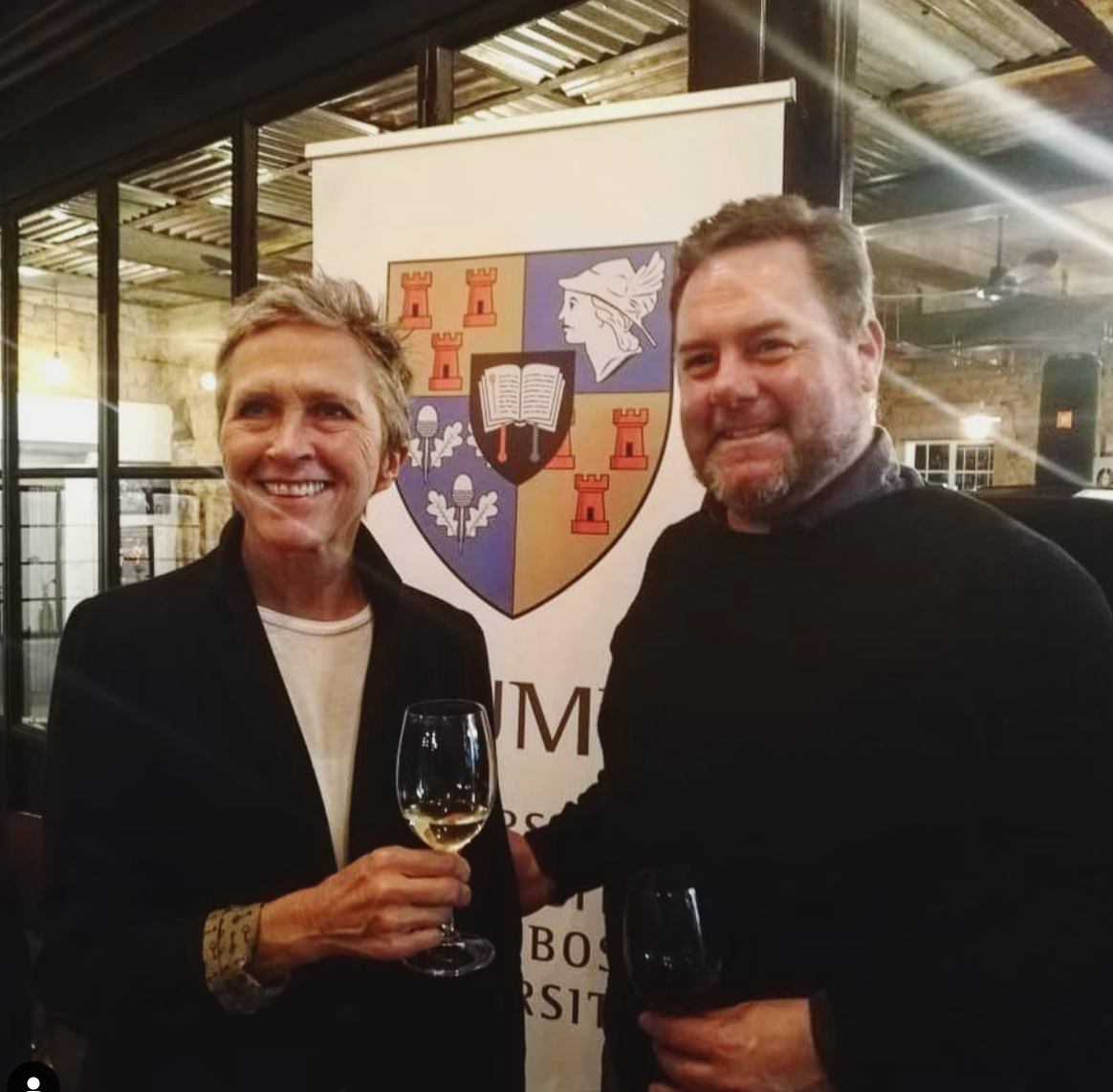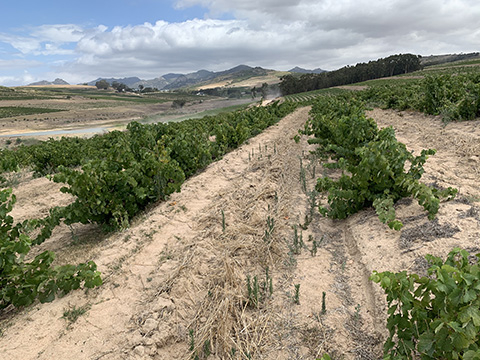
The Old Vine Project is an organization that was created to preserve South Africa's heritage vineyards. Over the past two decades many South African wineries had been pulling out old vineyards due to the low yields and generally challenging economics surrounding old vines. The Old Vine Project identified 3,505 hectares of vineyards with a vine age of over 35 years and its efforts have been a key factor in reserving the tide.
A key objective in the fight to save heritage vineyards is creating awareness about the premium nature of the wines made from old vines notable for showcasing intensity, freshness, texture and a sense of place. In raising awareness, the Old Vine Project has helped to develop a marketplace where farmers are now getting paid a premium for their old vines grapes.
Grape Collective talks with the Old Vine Project's André Morgenthal about the importance of saving heritage vineyards.
Andre, tell us a little bit about the Old Vine Project.
André Morgenthal: Well, the project is formally about three and a half years old now. We really started off almost 20 years ago, when Rosa Kruger started looking for old vines and then recently we got seed funding from Mr. Rupert to set up the organization. It started small, eight members, with the prominent old vine people that had been promoting old fine wines, and we currently have 70 members just three and a half years later. It's sort of very well steeped in the history of the country. The first South African wine was made in 1658 in Cape Town and I think the fact that we've been growing in grapes as a country since then makes us unique. We've got these old vines, they are not the oldest vineyards in the world when you get much older in Portugal and Spain, and even in Australia, funny enough, given that they got most of their cuttings from us, but we've had a serious virus problem.
It started small, eight members, with the prominent old vine people that had been promoting old fine wines, and we currently have 70 members just three and a half years later. It's sort of very well steeped in the history of the country. The first South African wine was made in 1658 in Cape Town and I think the fact that we've been growing in grapes as a country since then makes us unique. We've got these old vines, they are not the oldest vineyards in the world when you get much older in Portugal and Spain, and even in Australia, funny enough, given that they got most of their cuttings from us, but we've had a serious virus problem.
So not all varieties last that long. So it's only mostly white varieties. Chenin Blanc is more than half of our old vine hectarages. Thirty five hundred hectares at this moment of the 90-odd-thousand total hectarage. So it's a very small niche project. The volumes are small but it's high-quality, high-end wines and it captures the imagination of people cause there's always a story behind why the vineyard survived. You always wonder why and that brings us to our research about old vines because we want to understand why, viticulturally, that block survived over there. So we learned from the old vines viticulturally and then we apply that for future plantings. It's not only about the old vineyards, it's what I would call you plant to grow old. You consider the fact that you can actually retain that vineyard so it can grow old to 80 or 100 years old.
And how old does a vineyard have to be, to be considered an old vine vineyard?
That's a good question. We did a lot of research on that. I've spent the last few years when I went overseas and spoke to people in research, my counterparts and we settled on 35 years and older.
Mostly in other countries it's considered 30 to 40 years is when the vine sort of comes into its own balance. Jancis Robinson feels 60 years and older, well because of Barossa and some of Portugal as well.
But physiologically it seems that the vine comes into balance, especially if you look at the juice that it produces. The juice comes into the cellar in terms of analysis, quite in balance. In high acidity, low pH, high sugar, funny enough, low sugar and so that you don't have to fiddle too much with it. That's why mostly these wines are made in old barrels or cement eggs and not too much new wood. You don't want to influence the flavor profile that's already there. That's beautiful, complex and delicate.
And let's talk a little bit about the physiology of the vine. What happens to the vine as it gets older that allows it to produce more interesting wine?
That's what we are trying to figure out and as explained now we see it in the juice. The vine is almost like maturing people. You know, when you're a student you don't really care about tomorrow, you party hard and you spend all your money before the one month end. When you're in your thirties, in theory you should have a job in a career path and then some investments for the old age. I think the old vines, they see that, they look after their resources and especially in terms of drought or when there are adverse conditions and they soldier on when the young vines struggle.
And talking a little bit about South Africa, you have these very old Chenin Blanc vines. I understand that there were issues where people were ripping them out and you were losing a lot of this heritage. What happened with that and how is that something that you can preserve for the future?
We've come a long way in a few years. When I started the project, and especially with the big cooperatives, most of these old vines resided within those systems. If it's not economically viable, then you have to pull the vineyard out and plant young vines or another more profitable agricultural product like citrus. What we manage to do is we developed a business model that's sustainable for the farmer.
So you don't just get a couple of thousand rand per ton at the co-op. They're not getting paid eight to 15,000 rand a ton, which makes it more viable for the farmer to leave that vine in the ground. And then you get these high-quality grapes made by some of the people that you've seen who are making these special high-end wines. And the price points are high. So we are pushing up the price points, not only for the old vines, but in general. I'm building a model for the entire industry.
And the price points are high. So we are pushing up the price points, not only for the old vines, but in general. I'm building a model for the entire industry.
There's not, as I said earlier, not only about the old vines, we're trying to help viticulturally, a sustainable model. And the third element is the people. Now we are saving farmers, we are also saving vineyard workers and we're educating. We partner with Falco, the secateur company from Switzerland. They sponsor our training project, which we do every winter. Just before pruning starts, we do a few classes for our members because pruning old vines is not like pruning young vines. It's not a recipe. Each vine needs to be considered on its own. So we rather call it sculpting than pruning. Cause it's like an old age home and each person has got a different context and history and requirements.
So these old vines suffer from dead arm disease. What we found is that you should not be cutting those off. There's still some carbohydrates in that, what looks like a dead arm, that the vine draws from when it needs it and you need to work with your younger, more healthy wood and sculpt that vine back into a productive vine.
Just taking a broader look at South African wine. Can you give us a basic understanding of the history of winemaking in South Africa?
We've got an interesting history because as I said, we started in 1658 already, but there was a sort of a slump, there wasn't wine made like in other countries where it really grew. And especially with apartheid where we were sanctioned, we couldn't export, we couldn't travel to go and learn, very inward-looking and we're competing with ourselves not with other countries.
So for that reason it's an interesting history of isolation and making things work for ourselves without having any input from the outside. But still the wines from the '60s, '70s, '80s are fantastic wines and there's quite a revival the last five to 10 years within our industry where we are looking back into the libraries and drawing from those libraries to see what those wines looked like then and now. And there's also a revival of the Cinsault and Cabernet-driven blends. In those days if you said Cabernet or Shiraz on the label it was mostly Cinsault because we had a lot of Cinsault. Similarly with old Chenins and then we have varieties like Semillon, Semillon Gris, that also emerged from these neglected, forgotten old vineyards, which was just blended away into generic blends and now the blocks are isolated and very special wines are made from it.
Take a 360-degree virtual reality tour of South African wine regions. This experience only works in certain browsers including Google Chrome. You can also experience the VR tour directly via the Youtube app.
And there's a new younger group of winemakers in South Africa that have gone on to really embrace these old vines.
It's interesting to see that there's mostly the younger generation. I mean people like Charles Back, they've been working with these old blocks of Grenache and so forth for many years already. But there was no focus on old wine per se. Recently, one or two winemakers like Charles Back launched a Palomino. A Palomino was just a nondescript grape with no taste, bland and blended away or distilled for brandy. A lot of our history is based on our brandy history. The Chenin Blancs, they were all planted and Palomino for brandy distilling and now suddenly old vine Palomino is exciting and it's been treated as like a premium grape and it just produces beautiful wine. So the history is interesting in that sense that what we have forgotten we are reviving and the young winemakers, young generation, they saw that interesting factor from what they've seen overseas.
When you traveled to Spain and Portugal for example, first thing they show you, here's our old block, they don't even talk about the younger vines. You know in Spain with Grenache you only start making red table wine from it when it's 20 to 25 years old, before that it's rosé. The vine needs to mature first. The younger generation saw the value of it and everybody followed. So what we have now is that everybody is now protecting these old vines and there's just not enough of it. So it's a total converse of what it was three years ago. So you had this interesting situation where a few years ago nobody was paying any attention to old vines and now everybody wants the old vines and there's not enough of it. How do you manage that problem as well?
So you had this interesting situation where a few years ago nobody was paying any attention to old vines and now everybody wants the old vines and there's not enough of it. How do you manage that problem as well?
Well, what we are launching this year for this vintage is a trading platform. Where growers that hear about us when they read magazines and newspaper about it. They can go onto our website and they can post the block and the date and the region. A willing buyer, a winemaker, something like Duncan Savage would do, they would go to the site and there's an old block Chenin 45 years old in Willington for example, contact us. Nadia will respond to the seller and we'll put them together and then they'll start talking business. So facilitating the sale, not getting involved commercially, but facilitating. We wanted to do this a long time ago, but we didn't have access.
(André Morgenthal with Rosa Kruger)
People are actually coming to us now with, okay, we've got 30 tons of old Chenin in our system, what can we do with it? So that's one way we resolve it.
But the other thing is, I said, we are trying to keep those old vines in the ground. So over the three and a half thousand hectares, I always see these three sections and it's not a third, a third, a third, but the first section is vineyards that are spoken for already. That's Eben Sade and the Mullineauxs and the like. That's already looking after our blocks and I don't have to worry about that. The middle part, where we were losing the vineyards, I can't get these soon enough. I was in Bonnyville the other day. They call us, they want to get involved. It's the most bizarre thing for me that a very serious operative now sees the value of their old vines.
And I went up there and they've just now last year pulled out an old block since then, which is so sad, but it was only yielding one or two tons a hectare so they couldn't see the value of it. They don't even have small vessels in this area, then after invest in that. But they want to get involved. What the old vines do is they actually raise the profile of the brand and also the end of the country. So South Africa has I think benefited a lot from the noise made around the old vines 'cause it's as I said it's quality's high end. It shows that we can make really, really good wines. So we lose, some vineyards on the way. And then the last third is what needs to be pulled out anyway, it's too damaged by virus or it's planted in the wrong site, we will lose them anyway. So I have to just accept that.
But in the meantime, that middle part we are after and every year another set graduates into 35 years of vine age. Chenin Blanc is famous originally from Loire Valley and Vouvray. How is it different in South Africa, because you actually have more Chenin Blanc in South Africa than anywhere else?
Chenin Blanc is famous originally from Loire Valley and Vouvray. How is it different in South Africa, because you actually have more Chenin Blanc in South Africa than anywhere else?
That's right. Well, the difference is the sunshine. I was at the Chenin Blanc congress. We were a huge delegation of I think 35 or 45 South African winemakers, and viticulturists and researchers, professors attended this and I think they had 80 to 100 delegates and we were almost half of it. And they were curious, what are you doing here? And Ken Forrester told me, they were coming over to him and said, "What are you guys doing sniffing around our vineyards?" And he just said, "We don't need to learn anything, come taste our wines."
It's all so different. There's no need in trying to learn from the northern hemisphere. That's a mistake that the southern hemisphere made for many decades. Go to France work in a vineyard, learn about pulling leaves and whatever. Practice that. You need to do that to get sunlight.
But here, we've got enough sunlight, you need to protect the bunches, for example. So our flavor profiles are different. Our approach is different but there are similarities obviously. In the cellar, the way you look at the oak regime and so forth and skin contact and that's something that our young generation is experimenting with, quite a lot is skin contact, extended skin contact and creating interesting wines that are not similar to anywhere else. I think we've debunked this idea of trying to copy what is done elsewhere.
We want our own identity and that's what happened out in the Swartland with Chenin-driven white blends. It hasn't really been done. And I think Eben Sadie was the first with the Palladius to think in that direction. A lot of other winemakers followed suit and started experimenting with some from seven, eight to 12 varieties in one blend. But making these complex interesting textured wines.
And how would you describe old vine Chenin? For someone who hasn't tasted it, what are the descriptive properties?
Firstly, if you ask any winemaker across the world what makes old vines wines different, the keywords are complexity, purity, clarity, mouth feel, texture. So what happens with old vines is that they actually reflect the site rather than the fruit. So the Chenin Blanc Association of South Africa and University of Stellenbosch did a research project where they trained panels to taste young vine and old vine wines. And they found that on the aroma wheel of Chenin descriptors, they had to add in descriptors that came from these distinct panels. And it was clarity and it was complexity for example.
So the fruit stands back a bit and you get this complex depth of experience that you don't get often usually with younger vines. And I'm not saying old vine wines are better, it just makes different wines and interesting ones. The experience is different. But I mean the brilliant wines are made from 10-, 15-, 20-year-old wines. But it's just the interesting factor.
And talk a little bit about the challenges that South Africa faces as a wine region right now.
I think that there's always the commercial reality of trying to sell wine. As you very well know, in New York look at a shelf space when you walk into the shop and South Africa's in the bottom right-hand corner. To get shelf space. We've got enough hype but to sell the wine is the big challenge.
The sustainable model, financially. Also looking after our viticultural material and our people, but I think what you see now in the world is climate change. Things are changing and we don't really understand yet what's happening. In South Africa we can see how from west to east, if you look at the map, how the changes happen every year with rainfall. One of the delegates at the Chenin Blanc symposium, did a brilliant presentation on a comparison of what's happening in Australia and in France and South Africa in terms of rainfall and weather pattern changes. And we see it now with some areas harvesting much earlier than 10,15 years ago. Others later. So these changes we need to deal with.
(Old bush vines at Lammershoek in the Swartland)
So tell us about the Agulhas Wine Triangle.
So most regions are quite established in South Africa. You know Stellenbosch and Hemel-en-Aarde and Elim and so forth. But there's a few wineries right at the tip of Africa close to Agulhas, the southern most vineyards in Africa. And they've been going for almost 20 years now. And there's two wineries, three wineries in the Elim area. And Bruce Jack came along and said, well, let's establish the Agulhas Wine Triangle.
And the idea is to have a singular story around the windswept plains of the Strandveld area. The ruggedness... I mean it's really extreme wine-making. And what happens is they started off by thinking it's cool climate or so-called cool climate with very poor soils. They started Sauvignon Blanc and Semillon, Pinot Noir, they've got some Cab and Shiraz and what's interesting now is it's Sauvignon and Semillon and Shiraz Mourvèdre that's doing very well, it's showing beautifully.
Plus all sorts of other funny things that mixed blend. David Trafford planted Trincadeira and all sorts of Mediterranean varieties. The same at Olivedale Wines, where there's experimentation because it's a tabula rasa as they say in philosophy and it's a white wall. There's no handbook for that area. And you'll have to go across the world to extreme places to see our people managed to survive.
The people themselves are also very interesting. They were basically farmers, wheat and sheep farmers. They didn't know vines, but it's people like Bruce Jack that came to them and said you should plant vineyards. So we started that a few months ago and we are promoting that area. And the wines are pretty interesting as well.
But the total opposite from old vine wines. These are young vines.
Banner art and videography by Piers Parlett














